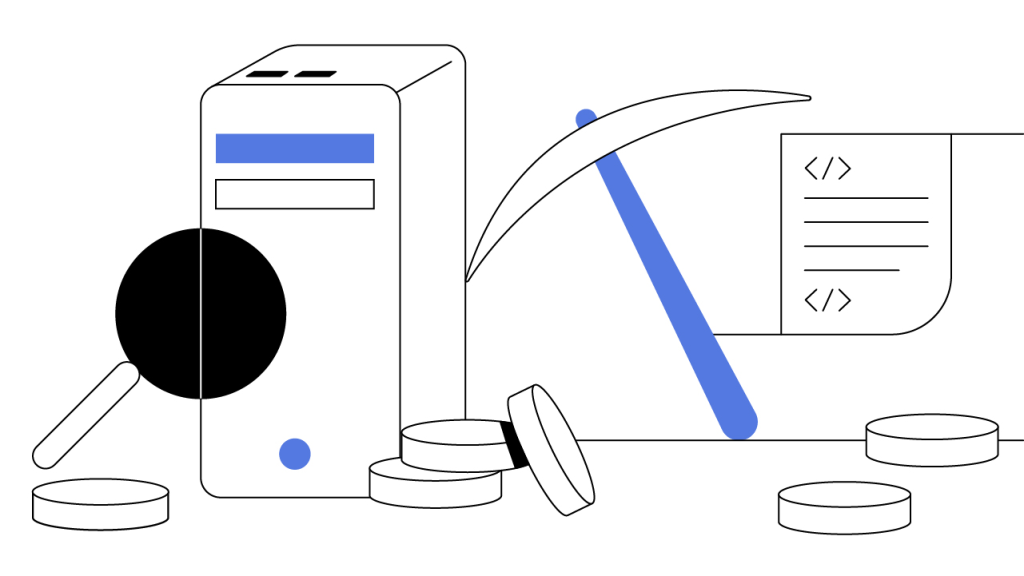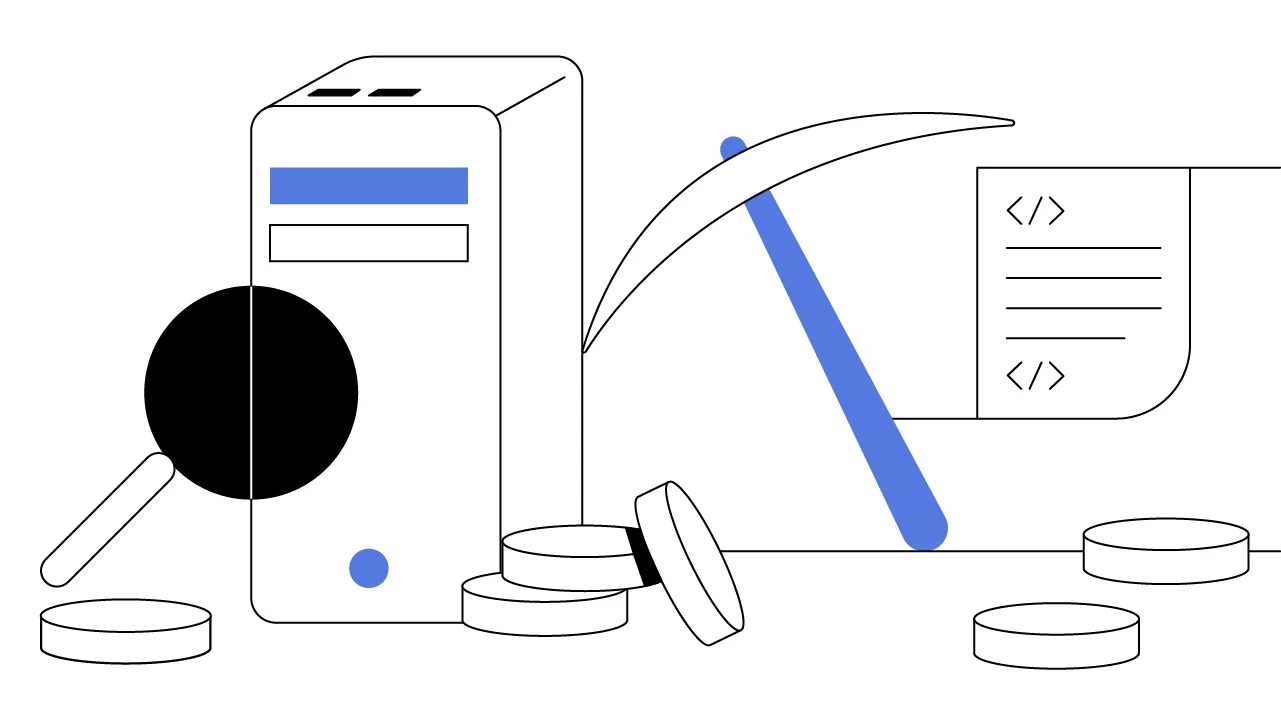How Many Bitcoins Are Left? BTC Supply and Mining Explained
How many bitcoins are left? Discover everything about Bitcoin’s supply, the mining process, and how it affects BTC’s value.
Updated February 26, 2025 • 5 min read

Summary
Bitcoin (BTC), the first and most well-known cryptocurrency, has dramatically impacted the financial sector since its inception in 2009 — but how many Bitcoins are left? This guide explores Bitcoin’s supply, the mining process, and key insights on its availability and value.
How Does Bitcoin Work?
Bitcoin operates on a distributed network, which allows users to use the network without needing intermediary institutions such as central banks for payments. Miners validate the transactions by solving various puzzles to provide security and legitimacy.
Bitcoin is a distributed ledger in which all transactions are recorded in a “block,” making them immutable. This transparency is a key to Bitcoin’s security and trustworthiness. Also, Bitcoin’s ownership is encrypted through cryptography, protecting the users’ private keys to facilitate the authorization of various transactions. Although Bitcoin’s proof-of-work consensus is highly energy-demanding, specific measures are being taken to increase green mining.
Unlock the future of money on Gemini
Start your crypto journey in minutes on the trusted crypto-native finance platform
How Much Bitcoin (BTC) Is Left To Mine?
Of the 21 million total bitcoins, about 19 million have already been mined, leaving approximately 2 million remaining. As the remaining supply decreases, mining rewards diminish through the periodic halving events. bitcoins are likely to be produced before reaching the limit.
Because of Bitcoin’s halving event, it will likely take years to mine the remaining 2 million bitcoins. With every halving event, the rewards are reduced, and the process becomes even slower and tends to consume more resources. The last bitcoin that will be produced and launched into circulation is expected to be produced by the end of the year 2140, ensuring the Bitcoin mining process will slow down in the market over time.
How Are New Bitcoins Created?
Bitcoin miners create Bitcoin through mining. This process involves computers solving complex cryptographic puzzles to validate transactions and safeguard the network. When miners successfully solve these puzzles, they add a new block to the blockchain and are rewarded with new bitcoins. This process of issuance, known as proof-of-work, is the cornerstone of Bitcoin’s decentralized security infrastructure.
Bitcoin mining is like solving complex puzzles that require a lot of energy from specialized computers. Initially, anyone could mine Bitcoin using a standard computer, but today, mining requires specialized hardware and substantial energy. Many miners now explore renewable energy options to offset environmental impact.
People within this industry are now looking for a green solution that can easily be produced from solar and hydroelectric power. Though mining is energy-intensive, the use of renewable energy is making Bitcoin mining increasingly efficient. Plus, new technologies contribute to decreasing the general carbon emission of mining and maintaining the system’s steadiness and flexibility against attacks.
How Long Does It Take To Mine New Bitcoins (BTC)?
On average, it takes around 10 minutes to mine a block and incorporate it into the blockchain or chain structure.
This time frame is well controlled in the Bitcoin network to balance the hash rate at which new bitcoins are released. It recalculates roughly every two weeks, depending on the network's overall computational power. This change guarantees that the time to mine each block remains constant as more Bitcoin miners join the network.
Every Bitcoin halving event in the mining of a Bitcoin decreases the number of new mining rewards — the process is slower now. At present, miners are generally paid 3.125 bitcoins per block, and as the block reward decreases, the rate of the new Bitcoins entering circulation slows down, too.
Will the Number of Bitcoins Ever Reach 21 Million?
The number of bitcoins in existence cannot surpass 21 million because this is built into Bitcoin’s protocol. Satoshi Nakamoto implemented this supply limit to create scarcity, similar to precious metals like gold. However, lost keys and inaccessible wallets mean the actual circulating supply may be slightly lower than 21 million.
Despite its well-established finiteness, reaching the maximum supply will take some time. Mining Bitcoin rewards are reduced by half every four years, so in 2140, the very last Bitcoin will be earned. After that, the miners will earn the transaction fees instead of new Bitcoins.
What Will Happen When the Last Bitcoin Is Mined?
The last Bitcoin is expected to be mined by the year 2140. After mining has been completed, no new bitcoins will be issued into the market. The miners will then rely on transaction fees to validate transactions and maintain the blockchain.
When block rewards disappear, miners can cover the expenses through higher transaction fees. The system will remain secure, and miners will continue to help approve transactions.
What Is a Bitcoin Halving Event?
A Bitcoin halving event occurs roughly every four years, during which mining rewards are reduced by half. This event is planned to control the issuance rate of new Bitcoins in a predictable way.
For the first four years, for instance, miners were awarded 50 bitcoins for every new block mined, although after each halving, this amount lessens to 25 BTC. Today, miners get 3.125 bitcoins per block, and until the next halving, it will be cut down to 1.5625. Bitcoin halving events are important because they reduce the speed at which new coins are issued into circulation. Such increased scarcity tends to raise demand and, therefore, plays a role in the appreciation of Bitcoin.
How Does the Total Supply Affect New Bitcoin Prices and Transaction Fees?
The limited supply-chain model, where there will be only 21 million Bitcoins, affects both Bitcoin price and accountancy charges for transactions. When the supply is at the edge of the limit, demand is pushed up by scarcities, which boosts the value. They also concluded that a more capped supply makes bitcoin more attractive as compared to fiat currencies with nearly unrestricted issuance.
When fewer bitcoins are being mined, miners receive low fees for the transactions they conduct. While the Bitcoin block reward will one day reduce significantly, these fees are likely to increase, particularly in periods of high network activity and volatility, to cover miners’ cost of sustaining the blockchain.
Bitcoin’s Value
Bitcoin valuation mainly draws from the digital commodity’s scarcity and decentralization. When supply decreases, demand increases, making Bitcoin more valuable. Bitcoin has low risk, low government intervention, and strong security, making it a secure digital asset.
Mining Fees
Mining plays a vital role when block rewards are reduced. Transaction fees compensate miners for their hard work in processing transactions and maintaining the blockchain. The transaction fees are high during the active network due to the high transaction volume to get them confirmed quickly and low during the least active network. The significance of transaction fees will become the primary incentive for miners to continue supporting the network, ensuring its long-term network security and instilling confidence in the future of Bitcoin.
The Final Word
As Bitcoin nears its 21-million supply limit, its value, mining, and transaction fees will continue to evolve. And as mining rewards decrease, transaction fees will become the primary incentive for miners to maintain network security. This growth, driven by Bitcoin’s scarcity and decentralized nature, offers a promising future for cryptocurrency.
Although mining might be energy-consuming, the adoption of smart energy of smart energy solutions has made mining more sustainable. As we get near the final bitcoin being mined, these principles of scarcity, decentralization, and network security will continue to shape Bitcoin’s future and contribute to the strength of its ecosystem.
Up for some insight into the real world of Bitcoin? Gemini is a secure way to buy, sell, store, and convert crypto.
Sign up for Gemini today, and join millions of people who are already using Gemini to diversify their portfolios.
Cryptopedia does not guarantee the reliability of the Site content and shall not be held liable for any errors, omissions, or inaccuracies. The opinions and views expressed in any Cryptopedia article are solely those of the author(s) and do not reflect the opinions of Gemini or its management. The information provided on the Site is for informational purposes only, and it does not constitute an endorsement of any of the products and services discussed or investment, financial, or trading advice. A qualified professional should be consulted prior to making financial decisions. Please visit our Cryptopedia Site Policy to learn more.

Is this article helpful?


